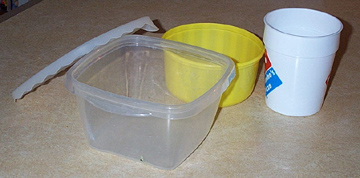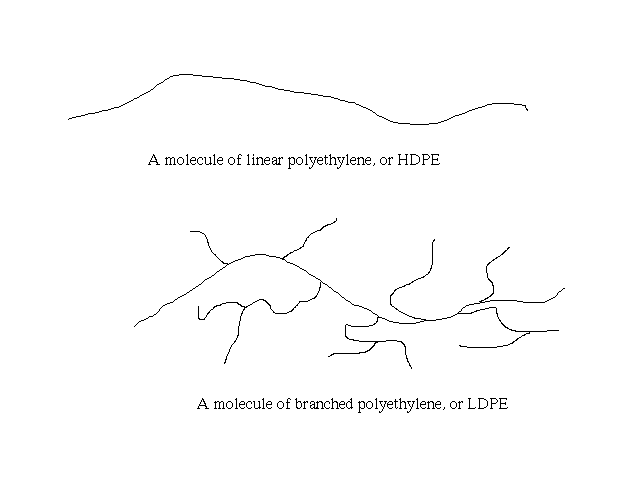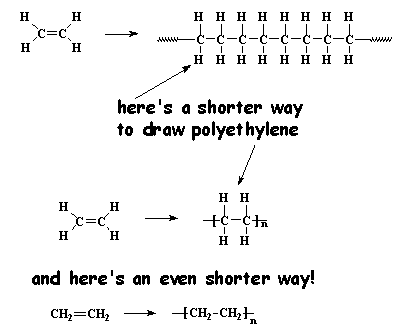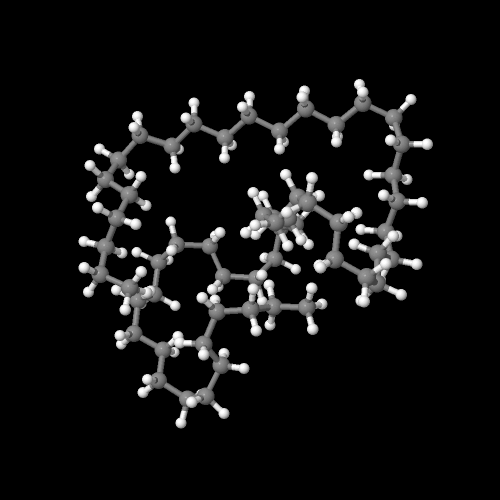
Polyethylene is probably the polymer you see most in daily life. Polyethylene is the most popular plastic in the world. This is the polymer that makes grocery bags, shampoo bottles, children's toys, and even bullet proof vests! The amazing thing is how simple the structure of polyethylene is. It's the simplest of all commercial polymers. A molecule of polyethylene is nothing more than a long chain of carbon atoms, with two hydrogen atoms attached to each carbon. That's what the picture at the top of the page shows, but it might be easier to draw it like the picture below. Of course a real chain of polyethylene has thousands, even hundreds of thousands, of repeats.

 Sometimes it's a little more complicated. Sometimes some of the carbons,
instead of having hydrogens attached to them, will
have long chains of polyethylene attached to them. This is called
branched, or low-density polyethylene, or LDPE. When there is
no branching, it is called linear polyethylene, high-density polyethylene, or HDPE. Linear
polyethylene is much stronger than branched polyethylene, but
branched polyethylene is cheaper and easier to make. Believe it or not, these inexpensive food containers are made from HDPE.
Sometimes it's a little more complicated. Sometimes some of the carbons,
instead of having hydrogens attached to them, will
have long chains of polyethylene attached to them. This is called
branched, or low-density polyethylene, or LDPE. When there is
no branching, it is called linear polyethylene, high-density polyethylene, or HDPE. Linear
polyethylene is much stronger than branched polyethylene, but
branched polyethylene is cheaper and easier to make. Believe it or not, these inexpensive food containers are made from HDPE.

Linear polyethylene is pretty big, with molecular weight of 200,000 to 500,000, but it can be made even higher. Polyethylene with molecular weights of three to six million is called ultra-high molecular weight polyethylene, or UHMWPE. It can be used to make fibers which are so strong they are even better than Kevlar for bullet proof vests. Large plastic sheets of this tough stuff can be used instead of ice for skating rinks! WOW! "Ice" that isn't cold!
| Here is the ethylene monomer. It looks a little like some kind of weird teddy bear. |

|
And here is the long polyethylene chain. |
| Other polymers used as plastics include: | Other polymers used as fibers include: |
| Polypropylene | Polypropylene |
| Polyethylene | Polyethylene |
| Polystyrene | Nylon |
| Polycarbonate | Kevlar and Nomex |
| PVC | Polyacrylonitrile |
| Nylon | Cellulose |
| Poly(methyl methacrylate) | Polyurethanes |

|
Return to Kinds of Polymers |

|
Return to Main Page |


